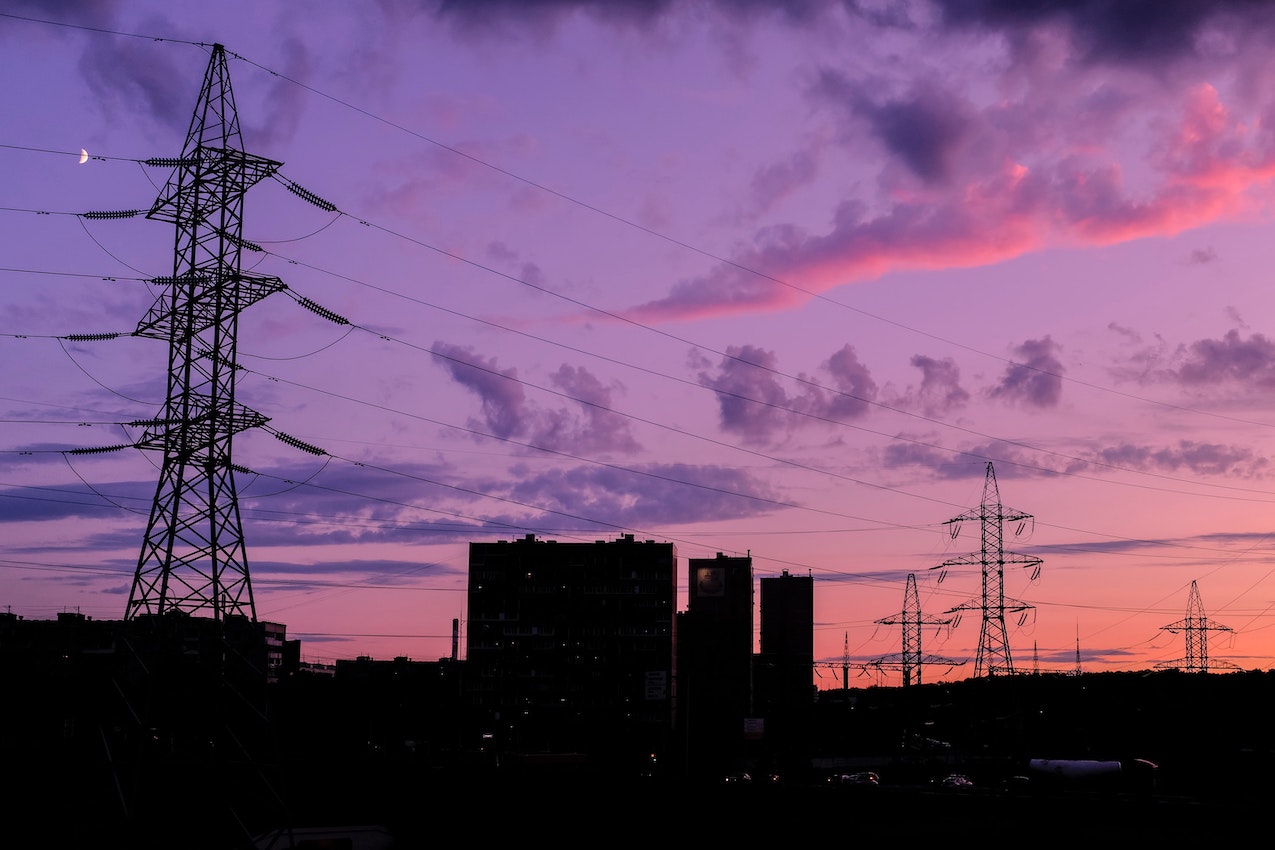
EnergyHub Team
October 29, 2020
During a difficult year, EnergyHub has been honored to work with utilities to respond to the evolving challenges affecting the power system.
We saw distributed energy resource (DER) programs play a unique role in continuing to build clean, reliable resources for utilities while keeping utility customers and employees safe at home. DERs are helping utilities address the impacts of shifting load shapes due to both increased behind-the-meter generation and people quarantined at home. And our clients’ DER portfolios have proven critical as dramatic heatwaves put increasing pressure on the grid every year.
Since our transition from a BYOT provider to an enterprise DERMS platform, EnergyHub’s solutions have continuously evolved to meet utilities’ needs. We’re now working with over 50 utilities to manage DER portfolios across thermostats, electric vehicle (EV) charging, batteries, solar inverters, water heaters, and commercial and industrial sites and aggregators. Across all our utility clients, we’re managing over 1,800MW in flexible load – the largest portfolio of any DERMS provider in the US, according to Wood MacKenzie.
I wanted to take a moment to reflect on the growth in scale and sophistication of DER initiatives – to understand how we got here, and where we’re headed next.
Fundamental shifts in the power industry
The rising importance of DERs has come about as a result of generational shifts in how power is produced and consumed.
On the consumer side, what Guidehouse Insights calls the shift from energy consumers to prosumers is fundamentally changing the relationship between utilities and their customers. Behind-the-meter DERs transform the ways households consume, generate, and store power. Utility customers are already adopting DERs at grid scale. In the US, there are now about 15M smart thermostats, 2M solar installations, and 1.5M EVs on the road. And we’re still in the early days of DER adoption. By 2025, total DER capacity in the US will reach 387 gigawatts.
At the same time, more and more utilities, including many of EnergyHub’s customers, are committing to aggressive decarbonization goals. SEPA reports that 57 utilities serving 68 percent of households in America have made commitments to reduce their carbon emissions. While the affordability of renewable energy has been a boon to decarbonization, renewable sources do make operating the grid more complicated. Utilities must overcome issues of renewable firmness, availability, and power quality on the path to decarbonization. Rather than shaping energy generation to meet demand, utilities are starting to think about shaping demand to meet renewable generation.
Customers’ DERs can directly mitigate many of the operational issues created by renewables. DERs can shift load, quickly balance intermittent renewables, and provide grid operators with new control levers for the distribution network. Thanks to the existing and rapidly growing base of DERs, utilities don’t have to do all the work themselves. They can make customer-owned DERs a central part of both decarbonization and grid modernization.
Evolving from BYOT to DER portfolios
DERs enable utilities and their customers to partner together to create a cleaner, more reliable energy system. The outcome is a win-win for customers and the grid.
EnergyHub pioneered the bring-your-own (BYO) model to help utilities rapidly scale their DER portfolios while rewarding customers for participating. BYO-DER programs have created a fundamentally new way for utilities to engage with their customers. Utilities can not only enable, but even reward customers for using their preferred devices.
The BYO model emerged through our work managing Bring Your Own Thermostat (BYOT) programs for utilities. This implementation delivered better engagement with customers and better results for the grid compared to legacy demand response programs. Over the years, we have constantly improved our BYOT solution, with many utility customers continuing to grow their programs and drive better and better results over the course of five years or more. We saw the total number of thermostats managed through our platform increase 120 percent from 2019 to 2020. Today, we manage the largest portfolio of thermostats of any DERMS provider in the country.
The experience of scaling BYOT programs has given us a repeatable playbook for engaging customers and building reliable aggregations of resources. Thermostat programs demonstrated that customers enjoy doing their part, and that their DERs can provide real value to the grid. And this is with heating and cooling, which is a lot more visible to end users than other types of DERs.
Over the past few years, we’ve worked with pioneering utilities to develop models that work for all classes of DERs: thermostats, EV charging equipment, residential storage, solar inverters, water heaters, and commercial and industrial sites and aggregators. We’ve studied technical details and behavioral habits to tailor our solution for each class of DERs. As a result, we’ve been able to turn the complexity and nuance of hundreds of thousands of customer-owned assets into simple but powerful DER portfolios with material impacts for utilities.
DERs’ role in transportation electrification
Harnessing the flexibility of EV charging has emerged as a top priority for utilities. Transportation electrification is singular in the scale of impact it will have on the grid. Major auto companies are preparing to launch dozens of new vehicles, providing customers with dramatically more choices and setting the stage for even more rapid adoption than we’ve seen to date. EEI forecasts that 18.7 million EVs will be on the road by 2030, and Bloomberg New Energy predicts EVs will account for the majority of passenger car sales by 2040.
On one hand, transportation electrification poses an opportunity for utilities to provide clean electricity to replace carbon-intensive fuel. At the same time, if everyone plugs in their cars at the end of the work day, we’ll see today’s load peak just get bigger. A Level 2 EV charger draws the same peak load as an entire household, and EVs are often adopted in geographic pockets.
Analyzing the behavior behind EV charging has revealed that this load is highly flexible. EV owners on average leave their vehicles plugged in for ten hours each night, while the average charging period lasts only about two hours. We’re partnering with utilities such as Eversource and Baltimore Gas & Electric on charging strategies that take advantage of the huge flexibility of in-home and workplace charging to better align charging load with grid conditions, wind and solar output, and market prices.
Part of the challenge is accounting for customers’ EV charging behavior. When do they charge? How will EV adoption occur across utilities’ service territories? For personal vehicles, what’s the right balance between home and workplace charging, and what’s the most effective approach to commercial vehicles? We’re excited to work today on EV programs that are helping us refine the incentives, rate structures, and other elements of program design that motivate customers to share control of and insight into their charging behaviors.
Solar + storage, and more
There are few trends that have been more controversial in the utility industry than the adoption of residential solar and storage systems. Yet forward-thinking utilities such as Eversource, National Grid, and Arizona Public Service (APS) have led the way in enlisting behind-the-meter batteries as hugely flexible resources to help manage the grid.
In many ways, batteries are the perfect grid resource. They can shift demand both up and down, provide grid support in milliseconds, and be dispatched frequently without impacting customer comfort. APS has taken advantage of this flexibility to shift load on a daily basis, absorbing midday solar production minimizing local evening peaks, and optimizing conditions on the distribution grid.
Batteries deliver a lot of value to the grid, which in turn allows utilities to offer compelling incentives to participate in utility programs. Incentives can offset a significant portion of a storage system’s price, rewarding existing storage customers and incentivizing new purchases. We’ve worked with National Grid to deploy the nation’s first bring-your-own-battery program with a performance-based incentive, and after just two years they’ve built a sizable grid resource with over 1,000 batteries that continues to grow rapidly.
Through partnering with our customers to design DER portfolios to meet their needs, we’ve learned that what utilities really need is a single platform to manage all classes of DERs rather than multiple asset-specific point solutions. Commercial and industrial (C&I) assets are an important part of this, and we’ve evolved our DERMS platform to manage C&I resources alongside residential resources. The result is one platform to manage all grid-edge DERs, utility- and customer-owned, commercial and residential. Again, we can look to National Grid as leaders. After working with us to manage successful thermostat and battery programs, National Grid moved their management of C&I resources to the EnergyHub platform.
Breaking out of yet another utility silo
Utilities are headed in the right direction with integrating DERs at scale as a part of modernizing the grid. But there’s one important barrier to capturing the full value of behind-the-meter DERs, and that’s the tendency for these programs to be confined within isolated utility silos. Utilities will ultimately need to build bridges between customer engagement, DSM, grid operators, and market-facing functions.
Utilities that are leading the way on DER strategy today are building integrations with the systems the control room uses. These systems need to know what these resources are doing and what kind of flexibility they can provide. We’re helping utilities build the bridge between the control room and demand-side resources by integrating our platform with the utility network management system, which in most cases is the ADMS.
We encourage all utilities to take this next step by collaborating across teams: distribution engineering and operations, the trading desk, and any other significant stakeholders. All utilities should start thinking about what it will look like to manage thousands of MWs of DER flexibility. What new relationships and work streams will be necessary?
Figuring out that piece of the puzzle will put utilities on the path of a clean, customer- and DER-centric grid. Utilities that get it right will show us the future: engaging customers, improving reliability, electrifying transportation, and decarbonizing the energy supply.
Interested in keeping up with the latest dispatch from the grid edge?
Get our next post in your inbox.


